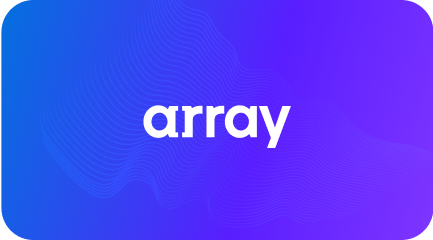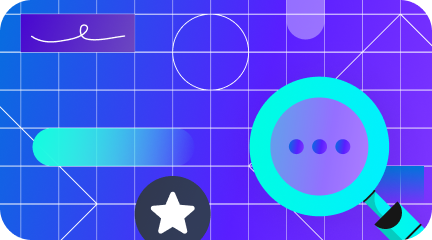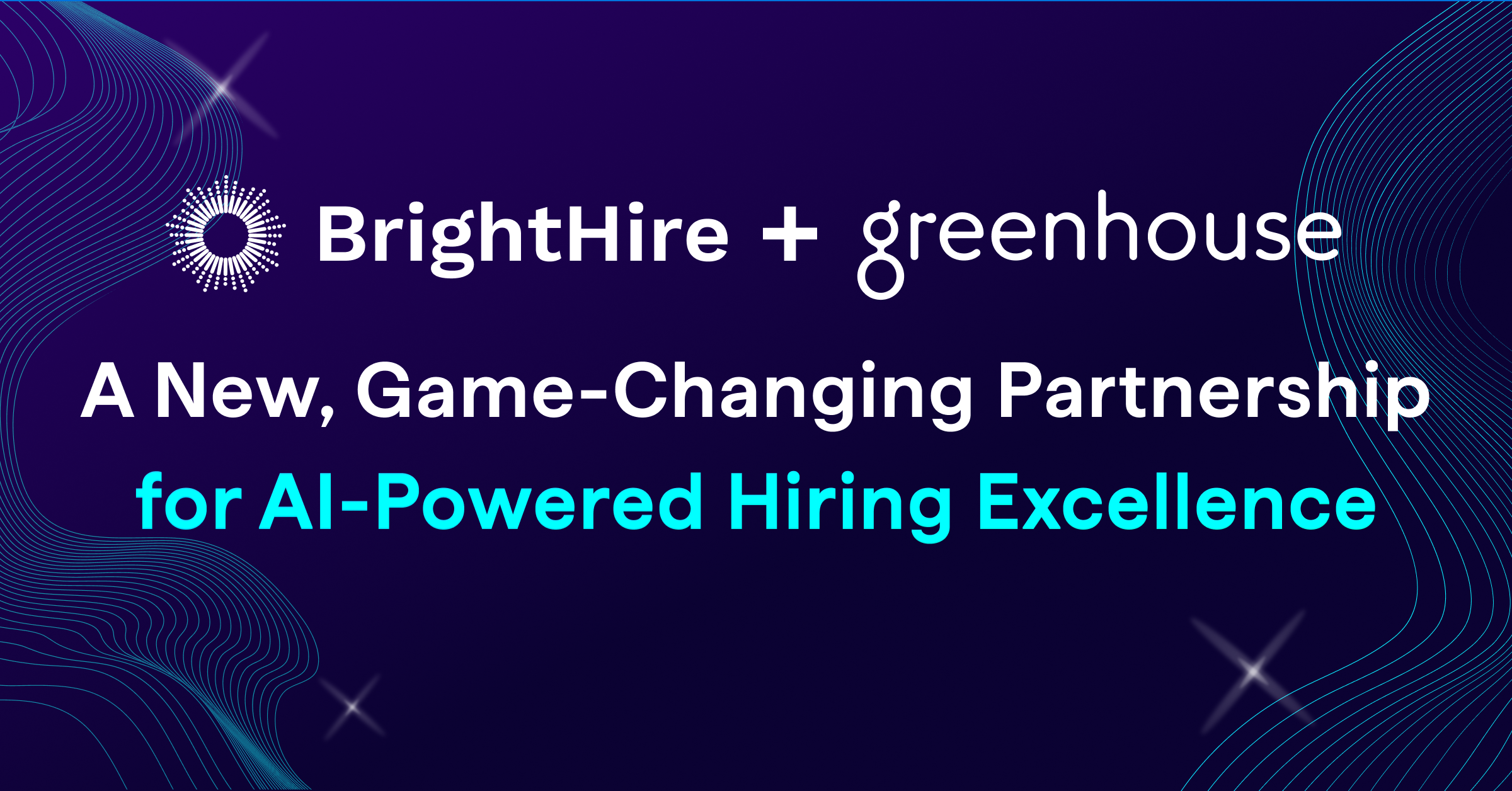Now more than ever, recruiting teams are being asked to do more with less and work more efficiently. To alleviate pressure on their teams, many companies are turning to AI — like ChatGPT — to find ways to bring more efficiencies to their hiring process and streamline their interviews.
What is AI for recruiting?
AI for recruiting is the use of AI-powered features and tools for all aspects of the talent acquisition process, from writing job descriptions to taking interview notes. The benefits are obvious — AI helps to automate more tedious parts of the process, allowing recruiters to save time, get more done with fewer resources, focus on candidates, and better collaborate with hiring managers.
Research shows that 79% of recruitment and hiring teams across all industries are already using AI, and 1 in 4 businesses plan to start or increase their usage of AI over the next five years.
Why do so many organizations turn to AI? 85% say it saves them time and increases efficiency; according to LinkedIn’s latest Future of Recruiting report. Many recruiters think AI holds a lot of promise when it comes to reducing or eliminating the time that administrative tasks take each day.
But as we’ve seen over the past few months, we’re just scratching the surface of the widespread impact of AI. It’s not as simple as using ChatGPT to create job descriptions or learn about new roles; there’s a lot of work to be done around understanding the bias of AI tools, the privacy implications, and the role AI can have in a human-first hiring approach.
That being said, there are some incredible ways AI can help recruiters with their jobs now, as our understanding of AI continues to grow.
6 Key Use Cases for AI in Recruiting
How exactly should recruiters and talent teams use AI in their jobs? “It’s different for everyone,” says Christina Selk, Senior TA Partner and ChatGPT prompt extraordinaire. “Think about your own work day and what you spend your time on, what’s most draining for you, and see how ChatGPT can help you with those things. In your own personal workflow, is there a way you can use this technology to do those things faster, better, or more efficiently? Using AI to supplement your skills is a good benefit. There’s simply no good reason not to.”
As the last few years have made clear, AI and AI-powered tools and software aren’t going anywhere — if anything, it’s only going to become more integrated in the tools recruiters use and rely on to do their jobs every day. It’s important to embrace AI and learn how to best use it with your company and workflow.
Below are six top use cases for AI in recruiting departments of any size and vertical. See if any of them resonate with you and think about how to implement some into your current workflow.
1. Increasing hiring efficiency
AI has the potential to take a lot of administrative, tedious work off of recruiters’ plates and allow them to focus more on the recruiting and hiring process they were hired to do. Especially if you’re running with a lean team, recovering all the time you possibly can is a top priority.
If you’re looking for ways AI can help you get more time back in your day, consider using it to:
Capture interview notes
Nicole Hirsch, Sr. Recruiting Manager at Lattice, uses BrightHire’s AI Notes to save time organizing her thoughts post-interview. “Let’s assume it takes you 15 minutes after every interview to clean up your notes, write your key takeaways, and fix grammar. AI Notes brings that down for us by 5 minutes on average,” says Nicole. “That might not seem like a huge deal, but imagine those 5 minutes across every single recruiter, hiring manager, and panel interview — depending on the scale of your organization, you’re talking about hundreds if not thousands of hours saved of your interviewers’ time.”
A tool like AI Notes allows your interviewers and recruiters to be more mindful of the time spent with candidates. “Recruiters can be more of an active listener during interviews because of AI Notes,” says Joy Reines, St. Manager of Recruiting Operations at Attentive. “It’s going to allow the recruiters and the interviewers to focus a lot more on what the candidate is saying, and not trying to get it all down at the same time.”
Create job descriptions
“Writing job descriptions has always been such a huge detractor of time and energy,” says Christina. “All recruiters feel this way, and even just reformatting a list of desired qualifications when you get them from a hiring manager can take so much time. Using AI with this task has been one of the biggest time savers I’ve seen by far.”
Sort resumes
Hannah Spellmeyer, VP of People at Yugalabs, uses AI to save time sorting through applicant resumes and finding those with the most relevant qualities and skills. “Anytime we post a job, within three days we’ll have 400 to 600 applications. This happens for any role we post,” says Hannah. “One of the tools we use for drip campaigns recently implemented an AI-driven resume sorter. We can give it a prompt, enter in the qualities we’re looking for, and pull the most relevant resumes to the top that we then go through first.”
And so much more
Other ways AI can help increase hiring efficiency include:
- Summarizing submitted resumes
- Writing candidate pitches (for recruiters at staffing agencies)
- Writing outreach emails to potential candidates
- Coming up with interview questions
- Compiling notes and key takeaways from candidate interviews
- Parsing through resumes to find top candidates
- Creating boolean strings for smart sourcing
2. Reducing bias with AI
30% of organizations use AI to improve their ability to reduce potential bias in hiring decisions, and for good reason. Although AI has a bias based on the data set it’s trained on, it’s a lot easier to be aware of and fix the bias than it is for our own, unconscious biases.
All of us have unconscious (and conscious) bias based on our differing backgrounds and experiences. This bias goes both ways — for many women and people of color, they feel they can’t apply to certain roles because of the biases they’ve experienced in the past and what they see in the industry every day. According to Lever, 50% of people think their race, gender, or ethnicity has stopped them from getting a job.
AI can help your recruiters reflect on their own biases and work to reduce or even eliminate their biases when interviewing and considering candidates. “AI can help you do some self reflection on how interviews went, whether or not you asked the right questions, whether or not you treated each candidate similarly, or if you were biased against one or the other,” says Rajamma Krishnamurthy, Sr. Director of HR Digital Strategy and Innovations at Microsoft. “We all bring our prejudices, good and bad, to the table when we interact with other human beings. Are those biases starting to show up when you interview one candidate versus another? That’s where AI can help quite a bit.”
Some tools can aggregate interview data and help you learn from previous interviews, too. BrightHire’s Equity Insights provides important insights to your team, including how the number of questions asked or how much candidates talk in interviews varies between male and female candidates or between recruiters and interviewers. Are you running the same style of interview for each of your candidates, or are you changing how you approach the conversation depending on who the candidate is? These are important, game-changing insights that AI can help you unlock.
3. Raising quality of hire
The more recruiters use AI to automate the rote administrative parts of their job, the more they can spend time on interacting thoughtfully and attentively with candidates. AI frees up time in the day and week to focus on the human element of recruiting.
“AI is going to help us as recruiters be better, and spend more time with candidates to decide what’s best for the company and what’s best for them — what the best fit is,” says Joy. “When a person is hired, they have to work with other people, not AI! So when they’re being recruited, you have to make sure everyone is getting along and has the best experience; make sure they understand what your company, the role, and the team is before they take the job.”
Quality of hire remains one of the most important KPIs for recruitment teams. It’s a measure of how a chosen candidate provides value to the company and how good of a fit they are in their role. AI can help every step of the way to ensure high quality of hire — more accurate and detailed job descriptions, more human-to-human interaction in interviews instead of furiously typing notes and not listening to answers, and parsing through hundreds of resumes to find the best candidates for a given role. There’s less disparity between what a candidate — or recruiter — thinks the job is and what it actually is. This reduces turnover, improves team morale, and decreases the cost spent on repetitive hiring and onboarding.
4. Keeping inclusivity and diversity top of mind
One of the best things about AI is its ability to help people teams scrutinize their own processes and how they align with the company’s goals and values. “You can use AI as a tool to hold a mirror up to your processes,” says Teddy Chestnut, Co-founder at BrightHire. “Are we doing what we thought we were supposed to do? We said we wanted to run this structured process; did we? It’s less about filtering, choosing, and selecting candidates, but more about how we’re doing our job and how we can be better at it and are we holding up to the standards we aspire to.”
At Greenhouse, a popular applicant tracking software and hiring platform, AI is used to help their people team be as intentional and thoughtful as possible. “What I have found is that even with the best intentions, people have flawed execution,” says Donald Knight, Chief People Officer at Greenhouse. “We want the execution to be right. Let’s evaluate the progress we said we wanted to make, and use AI to look at and query where we moved the needle and where we didn’t.”
Another huge benefit of AI is using tools like ChatGPT to find parallels in skillsets from one type of role to another. If your company is looking to fill open roles with candidates from different backgrounds, conversing with ChatGPT can surface the job titles of similar roles based on certain keywords and qualifications. “When we implement AI, what are we trying to impact?” asks Nicole Carriere, Sr. Manager of TA and Global Sourcing at Procore. “Productivity and time to fill are important, but how are you improving response and interest rates? How can you further diversify your talent pool and reach into different skills?” Using AI to help with this process leaves no stone unturned.
Or, you could use ChatGPT to create boolean strings related to certain diversity characteristics, like Hannah from Yugalabs. “We have a spreadsheet of boolean strings related to diversity characteristics. Some of what those include are all of the historically black colleges and universities in the U.S. and all of the ERGs that are well known at big companies like Google and Facebook.”
5. Improving recruiter enablement and education
Take advantage of ChatGPT’s wealth of knowledge — it was provided with the entirety of the internet up through September 2021, after all. Use it to learn about new industries or jobs you or your team have never sourced for before, or use it to create a library of information for onboarding new recruiters.
“More and more recruiters are doing broader and broader types of work. A lot of recruiters are doing this right now as we have these compressed teams. Going out and doing all of the research to understand what these different kinds of jobs might look like helps the recruiter, even if they’re somewhat new to that type of role or industry,” says Nicole from Lattice. “Using AI to do this research takes that learning curve from weeks or months to days or weeks.”
Hannah from Yugalabs recommends using AI in a similar fashion: “You could create a library of resources for recruiters when it comes to selling, pitching candidates, overcoming common objections, understanding a day in the life of the role and comparing it with the hiring manager’s idea of the role, and so on. You can immediately give recruiters credibility and education on the roles they’re hiring for.”
6. Seeing things from the candidate’s perspective
Let’s flip the script on this last one — what about how candidates are using AI to prepare for interviews? Just like recruiters can use ChatGPT to research the ins and outs of an industry or role, so can candidates. It’s likely that those same candidates are using AI to learn about your company, too.
“What could candidates be researching about you as a company? Use ChatGPT and AI to put yourself in the candidate’s shoes,” says Nicole from Procore. “This way, when you get on the phone with them, you’ll understand where they’re coming from. It can open your eyes to some of the main points they’ll find when researching your company before the interview.”
Plus, you can learn more about how others view your company and be prepared for any objections. Your team may think the company’s goals and values are being met, but do potential candidates and current employees? “AI is a good tool to find out which companies live up to the values and principles you’re looking for — including your own company,” says Donald from Greenhouse.
The Best AI Recruiting Tools
Separate from ChatGPT, there are dozens of AI-powered tools to choose from if you’re looking to supplement and supercharge your team’s efforts.
BrightHire
BrightHire is an interview intelligence platform used by talent teams at orgs like Canva, Zapier, and Justworks to run fair, structured, and efficient interviews. A suite of AI-powered features empower recruiting teams to run a more equitable hiring process and focus more on what really matters — the human interaction.
- AI-summarized Interview Notes and topics save interviewers thousands of hours and raise feedback submissions by 28%
- AI-generated interview summaries make it easy to review and rewatch a candidate’s answers
- AI-powered candidate highlights for data-driven, evidence-based decisions
- AI-generated comparisons make candidate evaluations a breeze
- AI-generated interview insights and automated coaching to level up interviewers and improve the candidate experience
Gem
Gem is a modern recruiting CRM, giving every team the tools they need to drive results and showcase impact. Auto-generated, personalized outreach powered by AI makes writing emails easier and less time-intensive. When searching for qualified candidates, Gem uses AI to identify candidates with relevant skills and job titles based on entered queries.
SeekOut
SeekOut is a tool built specifically for helping recruiters eliminate bias and find hard-to-find, diverse talent. AI-powered candidate search functionality and personalized messaging helps recruiters find candidates with very specific qualifications, like security clearances and certifications.
Moonhub
Moonhub helps recruitment teams quickly find great candidates and make quality hires with AI-powered software. Companies that scale fast and wide are a good fit for Moonhub.
GoodTime
GoodTime is an automated scheduling tool that helps recruitment teams schedule and run the best interviews possible. Their AI-powered workflow editor is fully customizable and can help automate as much of recruitment messaging as desired. Teams can find the best possible interviewer based on skill, focus area, and team with GoodTime’s intelligent interviewer selection, which also helps automate load balancing for interviewers.
Eightfold
Eightfold is a talent intelligence platform powered by AI, using aggregated data from billions of careers and millions of skills to help your recruitment team attract new employees, empower current employees, and support diversity goals.
How to Use ChatGPT for Recruiting: Prompts and Best Practices
The key to best using ChatGPT for recruiting purposes is to use it as a conversational tool instead of a search engine. Some of Christina’s top tips are:
- Don’t be afraid to tell ChatGPT you didn’t like what it responded to your prompt with. Ask it to change the tone, give it more context, or provide more options for you. Go back and forth with it, especially with research-related queries. You don’t have to keep reminding it what you’re talking about, because it already has the context.
- At the end of each prompt, ask ChatGPT what it needs clarification on to respond with optimal results. This way, before it gives you an answer to your prompt, it provides a list of questions you can answer in response. More often than not, this provides a thorough response and eliminates any of the mental work of trying to craft the perfect prompt.
- Never just copy and paste directly from ChatGPT into an email or job description — don’t just blindly trust it at surface level. Go through and double check for accuracy and edit to your voice and tone, if needed.
For inspiration on ChatGPT prompts, Christina has dozens of examples to choose from, but here are some of our favorites to start from:
Technical email outreach prompt
Craft a persuasive email highlighting cutting-edge technologies and growth opportunities for a [Job Title] role in the [Industry] at [Company]. Keep the message engaging and under 650 characters.
Preparing for a pre-screening call
As a recruiter, I’m preparing for a pre-screening call with a candidate. I’d like to anticipate questions they might ask about the [Job Title] role. Some details about the position include:
- Job Title: [Job Title]
- Job Description: [Job Description]
- Other relevant information: [Info]
Considering the information provided, what questions might a candidate ask during the pre-screening call about this specific role?
Creating funny, eye-catching subject lines for emails
As a recruiter in the [Industry] field, your mission is to fill a [Position Title] position at a [describe your org] company. Whip up 15 hilarious email subject lines that will have potential candidates chuckling while they eagerly open your messages. Keep them short and sweet, with a 50-character limit.
For more examples and inspiration, check out Christina’s LinkedIn page or GPT for HR, a free, crowd-sourced resource of prompts.
AI and Recruiting Ethics
As with everything, AI does have some drawbacks to be aware of. Using AI requires a certain level of responsibility and accountability. “AI is just there to help you. You need to make the decision. You need to scrutinize the outcomes and be responsible for those outcomes. Nobody else is accountable, regardless of which tool you’re using,” says Rajamma.
Before integrating AI into your recruiting practices, sit down with your team and discuss how you plan on using AI-powered tools as a team and what your policy is around the types of information you get from and feed to AI. Draw a line in the sand for what you will use it for and what you won’t use it for — and be prepared for candidates or even customers to ask how you use AI for your business.
There’s a distinction between using AI to help you make hiring decisions and using it to help make decisions for you. Due to the limitations AI does provide — and the inherent biases different tools will have based on their data sources — AI should only be a tool in your toolbelt, not the worker itself.
“We don’t use AI to make decisions at Greenhouse. We have a very hard stance on that. When you use AI to decide who’s being hired and who’s not, that’s an issue. What’s the integrity of the tool you’re using? Did it have a bias that was already built into it? Did it have diverse perspectives and diverse people that worked on building it in the first place?” asks Donald.
Also, you shouldn’t be using a tool like ChatGPT to input sensitive information. “From a compliance perspective, make sure you’re not putting in candidate information, proprietary company information, and other sensitive material,” says Christina. “ChatGPT isn’t a tool your company is paying for that’s made solely for the purpose of recruiting, so it’s not going to be secure. Be aware of what you’re sharing with ChatGPT; one of the reasons I’m guessing it’s free is because it gets a lot of data from users, and you’re the product with aggregated data.”
As long as your company does its due diligence on how you plan on using AI, training recruiters and hiring managers on how to use it, and ensuring you use it to inform decisions, not make them, you’ll likely be using AI the right way.
AI in Recruiting FAQ
What is artificial intelligence (AI)?
Artificial intelligence (AI) is computer science’s answer to human intelligence. It involves a series of datasets and algorithms to perform different functions and actions, such as researching a subject, answering queries, and aggregating data.
What is ChatGPT?
ChatGPT is a conversational AI chatbot developed by OpenAI that indexes web pages and information to answer prompts and queries.
How does ChatGPT-4 differ from ChatGPT-3?
ChatGPT-3 is free to use, and it launched in November 2022. ChatGPT-4 improves upon the language patterns and speed of GPT-3, and is supposed to more closely resemble human communication. GPT-4 is only accessible with a paid subscription.
Will AI take over recruiting and eliminate the need for recruiters?
No, not fully. It’s not possible for a computer to replace the emotional nature of humans and the recruiting process. Recruiters can add inflection, passion, and enthusiasm to their speech and influence the outcomes of the hiring process. Although decision-making is one of AI’s functions, human decision-making is much more informed and reliable. It’s more accurate to see AI as the tool, not the technician. AI can’t replicate the connection and energy between recruiters and candidates.
What are the benefits of using AI in recruiting?
One of the biggest benefits of using AI in recruiting is increasing team efficiency and reducing time spent on administrative, repetitive tasks. Other benefits include reducing bias, increasing diversity, bringing recruiters up to speed faster, better understanding the candidates’ perspective, and more.
What are some of the challenges of using AI in recruiting?
AI is still learning, so the information it can give you is not comprehensive. Plus, AI can never provide the human touch and personality that a recruiter can to the hiring process. Depending on how responsibly it’s used, AI can also create some legal or ethical challenges for your recruiting team.
Where does AI fit in a people-first recruiting approach?
The ways recruitment teams are currently using the technology are typically parts of the job that were already more impersonal and transactional. Research about a new skill set doesn’t involve any candidates or human contact, for example, so AI can’t take that away. AI helps reduce the time spent on those transactional tasks so recruiters can spend more time on the human elements, like the candidate experience and having conversations with more candidates.
If you’d like to learn more about BrightHire and our cutting-edge, AI-powered products, request a demo or contact our team of experts today.
To learn more from the talent leaders quoted in this guide, check out the on-demand recordings of our webinars, AI in Recruiting: Practical use-cases to be more efficient and AI for Good: The positive potential for breakthrough tech in HR.









